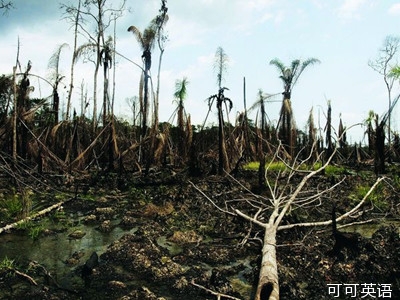Climate change is already melting the Arctic, queering weather and threatening food supplies. So who's paying the price for all these global warming impacts?
南极圈正因气候变暖在融化,天气变得异常,食物供应也受到威胁。那么谁会为气候变化的影响付出代价呢?
It might seem like insurers are most at risk. Indeed, insurers did pay out some $33 billion in climate-related damages last year in the U.S. alone.
看起来保险公司的风险最大。事实上,去年仅在美国保险公司就赔偿了330亿美元与气候有关的损失。

But it turns out that bearing the brunt of climate change costs is you, the taxpayer.
然而事实证明,是你,纳税人才是首当其中要付出代价的人。
A new analysis by the Natural Resources Defense Council, the NRDC, finds that the federal government spent three times more than the private insurance industry on climate change impacts last year. And, of course, those federal efforts are entirely funded by taxpayers.
一项来自美国天然资源保护委员会气候中心的新研究发现,联邦政府去年在气候变化影响方面的支出是私有保险公司的三倍。当然,联邦政府的收入全来自于纳税人。
“It is in effect a climate disruption tax, equivalent to a 2.7 percentage point increase in what Americans paid in sales taxes last year.” That's Daniel Lashof, director of the NRDC's Climate and Clean Air Program and co-author of the report.
自然资源保护委员会气候和清洁空气项目的主任兼本报告的合著者丹尼尔·拉肖夫说道:“实际上这是一种气候破坏税收,相当于多向美国人征收2.7个百分点的消费税。”
We spent nearly $100 billion in 2012 on drought-related crop insurance, storms like Hurricane Sandy, floods and wildfires. By comparison the nation spent $95 billion on education last year and just $91 billion on transportation.
2012年我们花了将近1000亿美金来来支付旱灾作物保险,以及像飓风桑迪这样的风暴、洪水以及森林大火造成的损失。比较之下,在教育方面的经费只有950亿美元,在交通方面的支出也只有910亿美元。
Greenhouse gas pollution shows no signs of slowing, recently touching 400 parts-per-million. And as that number continues to rise, so will the price.
温室气体污染没有显示出放缓的迹象,近期浓度已经接近百分之400。随着这个数字的上升,代价也在加大。













